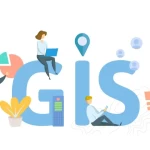- Table of Contents
- Introduction
- What is GIS Technology?
- What Does GIS Involve?
- Data Collection
- Data Storage
- Data Analysis
- Data Visualisation
- Decision Support
- Benefits of GIS Technology in Urban Planning
- 1. Simplifying Data Management
- 2. Spatial Analysis and Modeling
- 3. Exploring Future Scenarios
- 4. Community Involvement
- 5. Enhancing Decision-Making
- 6. Improved Resource Management
- 7. Supporting Emergency Preparedness and Response
- 8. Facilitating Smart City Development
- The Role of GIS Technology in Sustainable Urban Development
- 1. Smart Land Use Planning
- 2. Resource Management
- 3. Green Infrastructure Design
- 4. Transportation Optimisation
- 5. Disaster Preparedness and Resilience
- 6. Community Engagement and Planning
- 7. Monitoring and Evaluation
- How GIS is Applied in Urban Planning in Cities Around the World
- Barcelona, Spain
- Singapore
- New York City, USA
- Amsterdam, Netherlands
- Nairobi, Kenya
- Conclusion
Introduction
Urban planning has always played a critical role in shaping our environments. The need for effective planning and management becomes even more crucial as cities grow. Geographic Information Systems (GIS) technology transforms how urban planners approach these challenges. This blog post delves into the concept of GIS, exploring its components, benefits, and significant role in sustainable urban development. Additionally, we will examine how various cities worldwide are utilising GIS technology to create smarter, more resilient urban environments.
What is GIS Technology?
Geographic Information Systems (GIS) represent a powerful framework for gathering, managing, and analysing spatial and geographic data. Essentially, GIS merges cartography, statistical analysis, and database technology to visualise and understand complex spatial relationships. The technology allows users to capture, store, manipulate, analyse, manage, and present spatial or geographic data in informative and actionable ways.
GIS technology has become increasingly sophisticated, enabling planners and decision-makers to work with layers of information that can be viewed, edited, and analysed. This multidimensional capability is crucial for urban planners as they grapple with the intricacies of modern urban landscapes, which are influenced by many factors, including population density, land use, transportation networks, and environmental considerations.
What Does GIS Involve?
GIS is a multifaceted technology encompassing various processes and functions, allowing for the effective management and analysis of spatial data. Its capabilities can be broken down into several integral components, each contributing to the overall utility and power of GIS in urban planning and smart city development.
Data Collection
The foundation of any successful GIS system is robust and comprehensive data collection. This process involves gathering geographic data from various sources, which may include:
- Remote Sensing Involves Using satellite imagery and aerial photography to capture data about the earth’s surface. This method allows for monitoring land use changes, vegetation cover, and urban sprawl.
- Surveys and Field Studies: Conduct physical surveys to collect detailed data on specific locations, including infrastructure measurements, land conditions, and community demographics. This qualitative data can complement quantitative data obtained from other sources.
- Governmental and Public Databases: Accessing existing datasets maintained by governmental organisations, such as census data, environmental assessments, and land use records. These datasets provide essential baseline information for analysis.
Effective data collection involves gathering relevant information and ensuring its accuracy, reliability, and timeliness. This accuracy is crucial for making informed planning decisions.
Data Storage
Once collected, the data must be organised and stored to enable easy access and analysis. GIS employs specialised databases designed to handle both spatial and attribute data. Key aspects of data storage in GIS include:
- Geodatabase Systems: These are structured databases specifically designed to store spatial data. They allow for the efficient storage and retrieval of both vector data (points, lines, and polygons) and raster data (grids of values, such as satellite imagery).
- Data Standards and Formats: GIS utilises various data formats (e.g., shapefiles, GeoJSON) and standards (e.g., OGC standards) to ensure interoperability between different GIS software systems. This allows for seamless data sharing and integration among various stakeholders.
- Data Maintenance: Regular updating and maintenance of the database are essential to ensure data remains current and relevant. This involves periodic reviews and integrating new data collected through ongoing monitoring and community feedback.
Data Analysis
One of the most powerful aspects of GIS is its analytical capability. Through spatial analysis, urban planners can derive meaningful insights from complex datasets. Key functions of data analysis in GIS include:
- Spatial Analysis: This involves examining the spatial relationships and patterns within the data. For instance, planners can analyse proximity to amenities, density of housing, or accessibility to public transport. Techniques like buffer analysis, overlay analysis, and spatial interpolation help reveal critical insights.
- Statistical Analysis: GIS can integrate statistical tools to analyse data trends over time. Planners can assess the correlation between different variables, such as income levels and access to services, enabling them to identify inequities or needs within urban areas.
- Modelling and Simulation: GIS allows planners to create models that simulate various scenarios. For example, planners can model the impact of a new public transport route on traffic patterns or assess the potential effects of a zoning change on land use. These simulations provide valuable foresight, helping planners anticipate challenges and opportunities.
Data Visualisation
Visualisation is a crucial component of GIS, transforming complex data into easily understandable visual representations. Effective visualisation enhances communication among planners, stakeholders, and the public. Key aspects of data visualisation in GIS include:
- Mapping: Creating detailed maps that display various data layers, such as land use, population density, or environmental features. These maps can help planners identify trends, challenges, and opportunities within a geographic area.
- Interactive Dashboards: GIS technology can power interactive dashboards that allow users to explore data dynamically. Stakeholders can zoom in on specific areas, filter data by various criteria, and visualise changes over time, fostering deeper engagement with the planning process.
- 3D Visualisation: Advanced GIS applications enable the creation of three-dimensional visualisations, offering a realistic view of urban environments. This can be particularly useful for urban design, allowing planners and the public to see proposed developments in the context of existing landscapes.
Decision Support
At its core, GIS serves as a decision support system, providing urban planners and policymakers with the data and insights needed to make informed choices. Key functions of GIS in decision support include:
- Scenario Evaluation: GIS allows planners to evaluate the impacts of different planning decisions by simulating various scenarios and comparing outcomes. This enables a thorough examination of potential risks and benefits before implementing policies or projects.
- Stakeholder Engagement: By providing visual tools and accessible data, GIS facilitates communication and collaboration among stakeholders, including government agencies, community groups, and residents. This engagement is crucial for building consensus and ensuring that urban plans align with community needs.
- Policy Development: GIS informs the development of urban policies by providing evidence-based insights. Planners can utilise GIS data to support zoning regulations, infrastructure investments, and sustainable development initiatives, ensuring that policies are grounded in empirical evidence.
The integration of these components makes GIS a powerful tool for urban planners, enhancing their ability to analyse, visualise, and interpret spatial data effectively. This comprehensive data management and analysis approach ultimately leads to more informed, sustainable, and community-oriented urban planning practices.
Benefits of GIS Technology in Urban Planning
GIS technology has transformed urban planning by providing planners with the tools to analyse and interpret complex spatial data effectively. Integrating GIS into the urban planning process offers numerous advantages, facilitating better decision-making and fostering more sustainable, resilient, and inclusive urban environments. The key benefits of GIS technology in urban planning include:
1. Simplifying Data Management
Urban planners often grapple with vast amounts of data from diverse sources, including demographic statistics, environmental assessments, infrastructure details, and land use records. GIS streamlines the management of this information by allowing planners to:
- Integrate Diverse Data Sources: GIS enables the integration of various datasets into a single platform, providing a comprehensive view of urban dynamics. This holistic approach helps planners understand how different factors interact, from socio-economic conditions to environmental challenges.
- Organise and Visualise Data: GIS organises data in a user-friendly manner, making it easier to access and interpret. Using maps and visual representations, planners can quickly identify trends and patterns that may not be apparent in raw data.
2. Spatial Analysis and Modeling
Spatial analysis is a critical aspect of urban planning that involves examining the relationships between different geographical elements. GIS provides advanced tools for spatial analysis, allowing planners to:
- Assess Land Use Patterns: Planners can analyse existing land use to identify areas of overdevelopment, underutilisation, or potential for redevelopment. By evaluating spatial patterns, planners can propose zoning changes or identify areas for targeted development.
- Evaluate Accessibility: GIS can assess the accessibility of services and amenities, such as public transport, schools, and healthcare facilities. By analysing distances and travel times, planners can pinpoint areas lacking access and devise strategies to improve connectivity.
- Model Future Scenarios: Planners can utilise GIS to create models that simulate potential future scenarios based on different variables, such as population growth or changes in land use policies. This modelling capability aids in predicting the impacts of planning decisions and prepares communities for potential challenges.
3. Exploring Future Scenarios
Urban planning requires foresight to anticipate future needs and challenges. GIS equips planners with the ability to explore various future scenarios, enhancing their strategic planning capabilities:
- Scenario Planning: By simulating different development scenarios, such as high-density versus low-density growth, planners can evaluate the potential impacts on traffic, infrastructure, and environmental sustainability. This analysis supports evidence-based decision-making and promotes long-term thinking.
- Sustainability Assessments: GIS helps planners assess the sustainability of proposed projects by analysing factors such as environmental impact, resource consumption, and community resilience. This enables planners to prioritise projects that align with sustainability goals and community well-being.
4. Community Involvement
Engaging the community in planning is essential for creating inclusive and equitable urban environments. GIS facilitates community involvement in several ways:
- Public Participation: GIS-based tools can enhance public participation by providing community members with accessible platforms to visualise data and express their opinions. Interactive maps and online dashboards allow residents to actively engage in the planning process.
- Feedback Mechanisms: Planners can use GIS to collect feedback from the community regarding proposed developments or policies. Surveys and public forums integrated with GIS technology allow planners to gauge public sentiment and adjust based on community input.
- Transparency and Trust: GIS fosters transparency in planning by sharing data and visualisations with the public. This openness builds trust between planners and the community, encouraging collaboration and buy-in for planning initiatives.
5. Enhancing Decision-Making
The ability to make informed decisions is paramount in urban planning. GIS enhances decision-making by providing planners with comprehensive tools and data:
- Evidence-Based Policy Development: GIS supports evidence-based decision-making by providing planners with empirical data to justify policy recommendations. This data-driven approach enhances the credibility of planning initiatives and promotes accountability.
- Risk Assessment: GIS enables planners to identify potential risks associated with urban development, such as flood zones, earthquake-prone areas, or environmental degradation. Planners can develop mitigation strategies and create resilient urban environments by assessing these risks.
6. Improved Resource Management
Effective resource management is crucial for sustainable urban development. GIS contributes to more efficient resource management by enabling planners to:
- Optimise Infrastructure Investments: GIS allows planners to analyse existing infrastructure and identify areas needing improvement or expansion. Planners can allocate resources more effectively by pinpointing where investments will have the most significant impact.
- Manage Natural Resources: GIS supports the management of natural resources, such as water, land, and energy, by providing data on availability and usage patterns. This information helps planners develop strategies for sustainable resource use and conservation.
7. Supporting Emergency Preparedness and Response
GIS plays a vital role in enhancing emergency preparedness and response strategies within urban areas:
- Disaster Risk Mapping: GIS allows planners to create detailed maps of hazard-prone areas, such as flood zones, earthquake faults, or wildfire risks. These maps inform disaster preparedness plans and evacuation routes, ensuring communities are better equipped to respond to emergencies.
- Real-Time Data Integration: During emergencies, GIS can integrate real-time data from various sources, including weather reports and traffic conditions. This information aids in efficient emergency response coordination and resource allocation.
8. Facilitating Smart City Development
According to Statista, the global Smart Cities market is anticipated to experience substantial revenue growth, with projections estimating revenues to reach US$72.52 billion by 2024. Furthermore, this growth is expected to persist at a compound annual growth rate (CAGR) of 9.72% from 2024 through 2029. GIS is a cornerstone of smart city initiatives, providing the data and analytical tools necessary for creating connected, efficient urban environments:
- Data-Driven Solutions: GIS allows cities to harness data from IoT devices, such as sensors, for traffic monitoring or air quality assessment. By analysing this data, planners can develop targeted solutions for urban challenges, from traffic congestion to pollution control.
- Integrated Planning: GIS supports integrated planning by combining data from various sectors, including transportation, housing, and environmental management. This holistic approach fosters collaboration among different city departments and stakeholders, promoting coordinated efforts in smart city development.
The benefits of GIS technology in urban planning extend beyond mere data management; they encompass a comprehensive approach to creating sustainable, resilient, and inclusive urban environments. By simplifying data, enhancing analysis, promoting community engagement, and facilitating smart city initiatives, GIS empowers urban planners to make informed decisions that positively impact communities. As cities continue to evolve and face new challenges, the role of GIS in urban planning will only grow in importance, driving innovative solutions and fostering a better quality of life for residents.
The Role of GIS Technology in Sustainable Urban Development
According to the United Nations, by 2030, 60% of the global population is expected to reside in urban areas. This shift presents significant challenges and opportunities for achieving sustainable city development. Sustainable urban development aims to create urban spaces that meet the needs of the present without compromising the ability of future generations to meet their own needs. Achieving this balance requires a comprehensive understanding of various interrelated factors, including land use, resource management, and community dynamics. GIS technology supports sustainable urban development by providing essential tools and data for effective planning and decision-making. The following highlights key areas where GIS contributes to sustainable urban development:
1. Smart Land Use Planning
Land use planning is fundamental to sustainable urban development. GIS enables planners to make informed decisions about how land should be utilised based on environmental, social, and economic considerations. Key aspects include:
- Zoning Analysis: GIS allows planners to analyse current land use and evaluate the implications of different zoning regulations. By visualising the impact of zoning changes on various factors, such as traffic patterns and community amenities, planners can make data-driven decisions that promote sustainable land use.
- Site Suitability Analysis: GIS can assess the suitability of various sites for specific uses, such as residential, commercial, or recreational. Factors such as topography, access to infrastructure, and environmental constraints can be evaluated to determine the most appropriate land uses, minimising environmental impact and enhancing community well-being.
2. Resource Management
Efficient resource management is critical for sustainability. GIS aids in managing natural and human resources, enabling planners to develop strategies that conserve resources and promote efficient usage:
- Water Resource Management: GIS can analyse water availability and usage patterns, helping planners identify areas where water resources are under stress. This information supports the development of strategies for sustainable water use, including rainwater harvesting, wastewater recycling, and efficient irrigation systems.
- Energy Management: By mapping energy consumption patterns, GIS can help identify opportunities for energy efficiency improvements, such as optimising the placement of renewable energy sources (solar panels, wind turbines) in urban areas. Additionally, GIS can facilitate the analysis of energy distribution networks, ensuring that energy infrastructure meets the community's needs sustainably.
3. Green Infrastructure Design
Green infrastructure refers to a network of natural and semi-natural features that provide environmental, social, and economic benefits. GIS plays a crucial role in designing and implementing green infrastructure projects:
- Biodiversity Mapping: GIS can identify and map areas of high biodiversity, enabling planners to protect important ecological areas and promote biodiversity conservation. By analysing habitat connectivity and ecological corridors, planners can enhance the resilience of urban ecosystems.
- Stormwater Management: GIS supports the design of sustainable stormwater management systems, such as permeable pavement and bioswales, which help mitigate flooding and improve water quality. Planners can model runoff patterns and assess the effectiveness of various stormwater management strategies, ensuring that urban areas remain resilient to extreme weather events.
4. Transportation Optimisation
Transportation systems are a critical component of urban infrastructure, and their efficiency directly impacts sustainability. GIS technology enhances transportation planning in several ways:
- Public Transit Planning: GIS helps planners analyse transit routes and ridership patterns, enabling the design of efficient public transportation systems that reduce reliance on personal vehicles. By identifying areas with high demand for public transit, planners can optimise routes and schedules, promoting greater accessibility and reducing traffic congestion.
- Active Transportation Networks: GIS can assist in designing networks for pedestrians and cyclists, such as bike lanes and walking paths. By mapping existing infrastructure and identifying gaps, planners can create safe and convenient routes that encourage active transportation, contributing to reduced greenhouse gas emissions and improved public health.
5. Disaster Preparedness and Resilience
Sustainable urban development includes preparing for and mitigating the impacts of natural disasters. GIS is instrumental in disaster preparedness and resilience planning:
- Hazard Mapping: GIS can map areas susceptible to natural hazards, such as floods, earthquakes, or landslides. By analysing historical data and environmental factors, planners can identify high-risk zones and develop strategies for disaster preparedness, including evacuation routes and emergency response plans.
- Resilient Infrastructure Planning: GIS enables planners to assess the vulnerability of existing infrastructure to climate change and other hazards. This assessment informs the design of resilient infrastructure that can withstand extreme weather events, ensuring that urban areas remain functional and safe during crises.
6. Community Engagement and Planning
Sustainable urban development is inherently tied to community involvement. GIS technology facilitates community engagement in the planning process, ensuring that development aligns with the needs and aspirations of residents:
- Interactive Mapping Tools: Planners can use GIS to create interactive mapping tools that allow community members to visualise data and express their preferences. These tools encourage public participation in planning, fostering a sense of ownership and collaboration.
- Equity Assessments: GIS can help identify disparities in access to resources and services within communities. By analysing demographic data alongside spatial information, planners can target interventions to promote social equity and ensure that all community members benefit from urban development initiatives.
7. Monitoring and Evaluation
For sustainable urban development to be effective, ongoing monitoring and evaluation are essential. GIS provides the tools necessary for assessing the impact of planning initiatives over time:
- Performance Metrics: GIS can track key performance indicators related to sustainability, such as reductions in greenhouse gas emissions, improvements in public health, and increased access to green spaces. This data allows planners to evaluate the effectiveness of their strategies and make adjustments as needed.
- Longitudinal Studies: By maintaining historical datasets, GIS enables planners to conduct longitudinal studies assessing urban development initiatives' long-term impacts. This information is vital for understanding the outcomes of planning decisions and informing future policies.
KPI | Description |
Greenhouse Gas Emissions | Measures total emissions per capita |
Public Transportation Usage | Tracks percentage of residents using transit |
Green Space Availability | Assesses parks and green areas per capita |
Water Quality Index | Evaluates cleanliness of local water sources |
Energy Consumption | Monitors energy use per household annually |
Table: KPIs of sustainable urban development
The role of GIS technology in sustainable urban development is multifaceted and vital. From smart land use planning to resource management, green infrastructure design, and community engagement, GIS provides the tools and insights necessary to create urban environments that are not only livable but also resilient and sustainable. As cities continue to grow and face complex challenges, integrating GIS technology into the urban planning process will be essential for fostering a sustainable future that balances environmental integrity, economic vitality, and social equity.
How GIS is Applied in Urban Planning in Cities Around the World
Cities worldwide use GIS technology to enhance urban planning and smart city development. Here are a few notable examples:
Barcelona, Spain
Barcelona has embraced GIS technology to optimise urban planning and improve city services. The city utilises GIS for various applications, including traffic management, waste collection optimization, and urban mobility planning. Through real-time data analysis, Barcelona can respond swiftly to emerging challenges, such as traffic congestion or public health concerns.
Singapore
Singapore's urban planning agency employs GIS technology to create a comprehensive digital model of the city. This model integrates various datasets, enabling planners to simulate and analyse the impact of different development scenarios. GIS technology underpins Singapore's focus on smart city initiatives, such as smart mobility and resource management, fostering a more sustainable urban environment.
New York City, USA
New York City utilises GIS to inform a wide range of planning decisions, from zoning regulations to environmental assessments. The city's Open Data initiative provides public access to GIS datasets, empowering residents to engage in urban planning discussions. By leveraging GIS technology, New York City can better understand and address housing, transportation, and public services issues.
Amsterdam, Netherlands
Amsterdam has integrated GIS into urban planning to enhance sustainability and livability. The city uses GIS to manage public spaces, optimise transportation networks, and monitor environmental conditions. Data-driven insights from GIS technology support Amsterdam's commitment to green infrastructure and sustainable development.
Nairobi, Kenya
In Nairobi, GIS technology addresses urban challenges, including informal settlements and inadequate infrastructure. The city has implemented GIS-based mapping initiatives to identify and assess informal settlements, enabling targeted interventions and resource allocation. By leveraging GIS, Nairobi can enhance urban planning efforts and promote inclusive development.
Conclusion
GIS technology is revolutionising urban planning and smart city development by providing planners with the tools needed to understand and manage complex urban environments effectively. Through data collection, storage, analysis, and visualisation, GIS empowers decision-makers to make informed choices that promote sustainability, efficiency, and community engagement. As cities continue to grow and evolve, the role of GIS will only become more critical in shaping resilient and livable urban spaces. By embracing GIS technology, urban planners can create smart cities that respond to their residents' needs and future challenges.
Those interested in harnessing the full potential of GIS for urban planning should consider enrolling in our course, "Geographic Information Systems (GIS) for Sustainable Development." This comprehensive program equips participants with essential skills to effectively use GIS tools to create sustainable urban environments. Join us to learn how to make a real impact on urban development and contribute to building smarter, greener cities for generations to come.

























